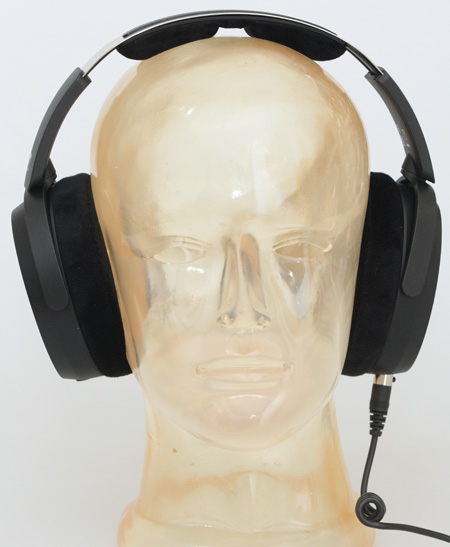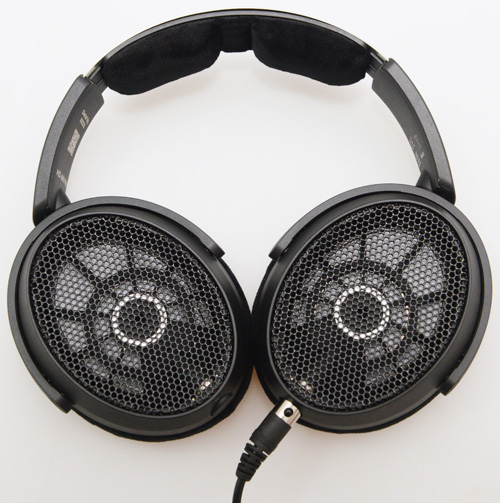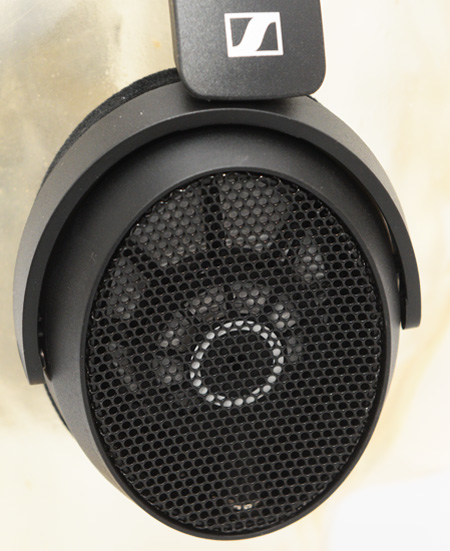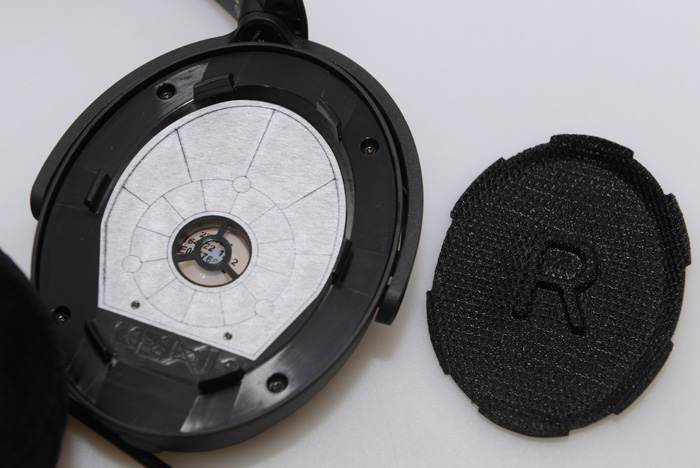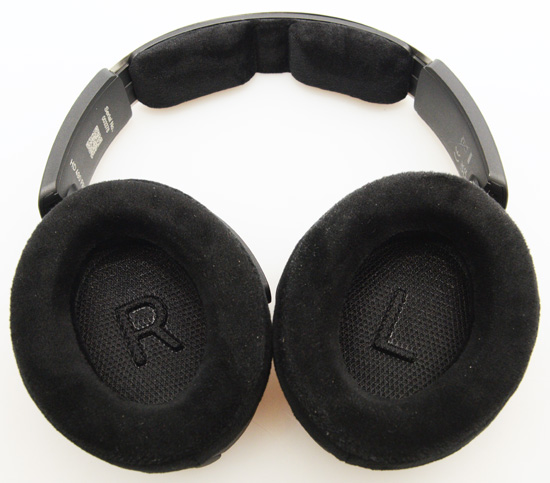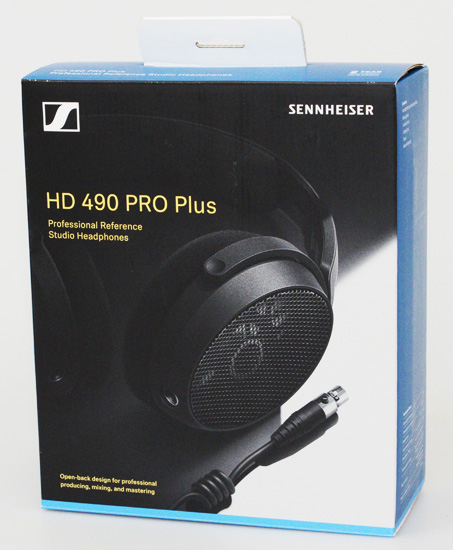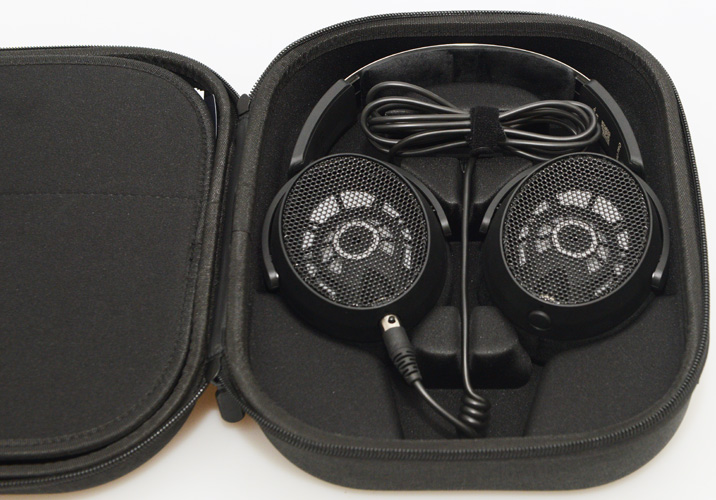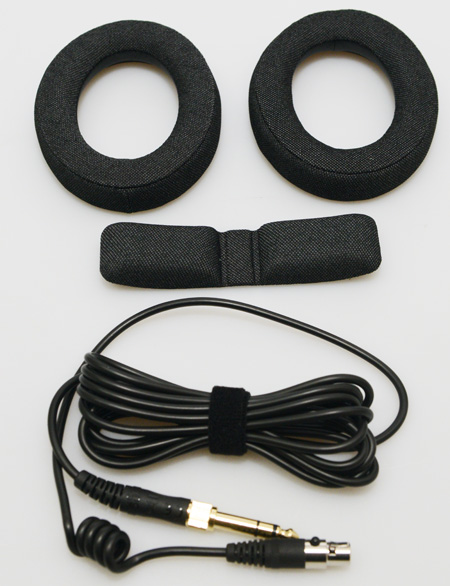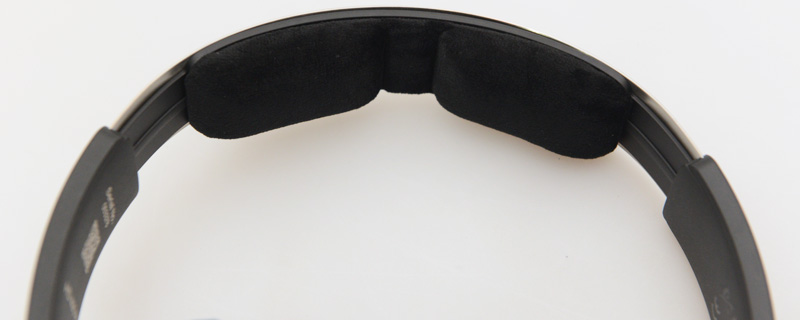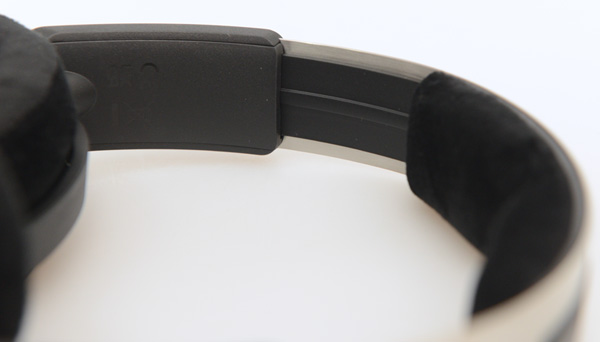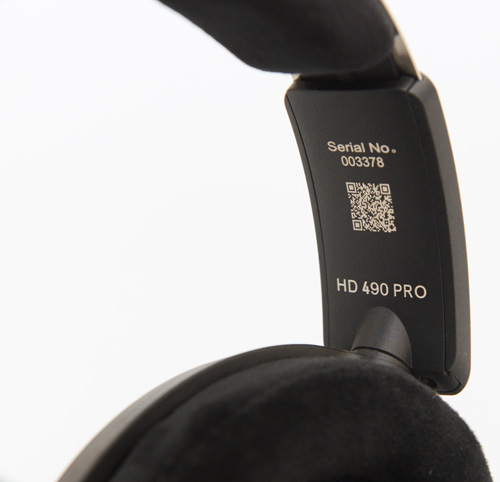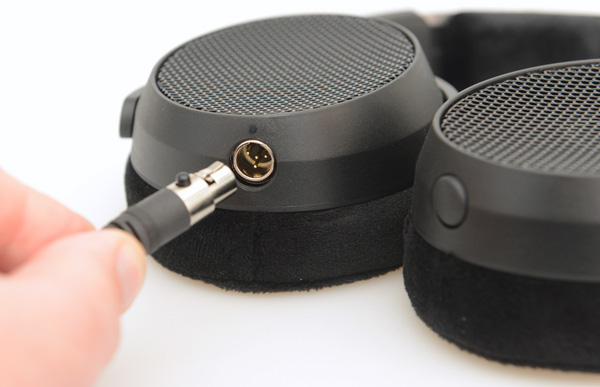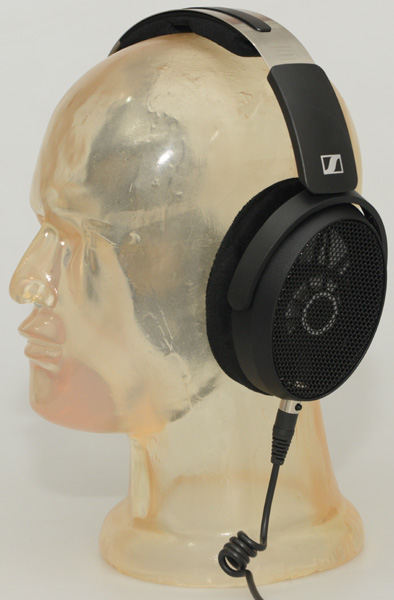Sennheiser HD 490 PRO
headphones with dynamic transducer for studio applications
Author and photos: Peter Kaminski
Sennheiser launched the new HD 490 PRO professional studio headphones at NAMM 2024. Sennheiser has focused on the professional market in recent years, and the Swiss company Sonova Holding AG has taken over the Sennheiser brand in the consumer market. All headphones in the consumer segment have the HD model designation in conjunction with a number starting at 500, while the professional series has model numbers in the 400 range like the Sennheiser HD 400 PRO, which was still based on the consumer series. This is now completely different with the HD 490 PRO, as the headphones are a new development and the flagship of the series of headphones for professional applications and offer a whole range of special features.
Concept and technical data
One thing becomes clear when you first look at the headphones: they are circumaural and, above all, acoustically open,with a dynamic transducer principle. Everything was designed to be as open as possible. The weight is 260 grams without the connection cable.
The two transducers have a diameter of 38 millimeters with a neodymium magnet, like most modern headphones. An existing driver was used as the basis; however this was modified through many listening tests and optimized to meet the needs of professional users. But as we will see later, Sennheiser has not only shaped the sound through the driver. There is also a so-called low-frequency cylinder on the transducer, which you can clearly see around the transducer in the picture above, which tunes the bass range and is intended to ensure a clear bass without artifacts. Sennheiser specifies the transmission range of 5 Hz to 36.1 kHz (-10 dB).
The maximum sound pressure level is 128 dB SPL (at 1 kHz and 5 % THD), and the sensitivity is specified as 105 dB SPL (1 kHz/1 Vrms) or 96 dB SPL (1 kHz/1 mW). The impedance of 130 Ohm (@ 1 kHz) is in the medium range, and the rated power is 300 mW.
The two ear cups of the headphones can also be folded down so that the headphones can lie flat on the table. The channel designations are also clearly marked on the inside of the ear cups.
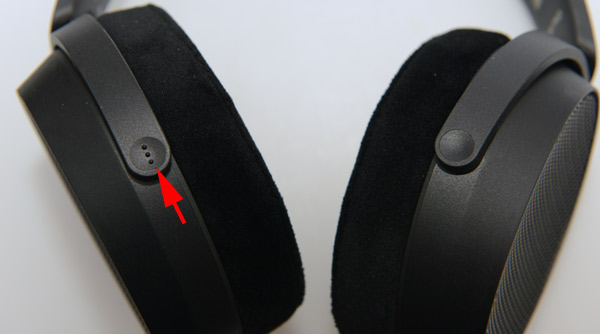
Tactile markings for headphone orientation on the HD 490 PRO are an excellent idea. For the correct wearing direction, there are two indentation marks at the back, and three dots (see illustration above) are embossed on the left-hand side of the headphone cup. When you hold the headphones in your hand, you can immediately feel whether they are correctly aligned.
Scope of delivery
The HD 490 PRO version includes the headphones and two different ear pads (velour/cloth), as well as a 1.8-meter long connection cable for unbalanced operation (3.5 mm stereo jack plug with 6.3 mm jack adapter).
The HD 490 PRO Plus also comes with a transport case (see illustration above), an alternative headband cushion made of fabric (see illustration below), and a three-meter connection cable with jack plug (also 3.5 mm and with 6.3 mm adapter). On the headphone side, the cable is spiral-shaped in an area just below the plug to prevent structure-borne noise from being transmitted via the cable.
The activation code for the license of the dearVR MIX-SE plug-in is also supplied as software.
Headband
The headband cushions consist of two cushions, and there is therefore a gap in the middle.
The headband can be moved by approx. 37 millimetres on each side, i.e. approx. 75 mm in total. The headband extension is notched, and there is also a scale on the top so that the extension can be adjusted equally on both sides.
The serial number of the headphones is printed on the inside right side of the headband. This allows you to identify your own headphones repeatedly.
Ear pads
One of the special features of the HD 490 is that it comes with two different pairs of ear pads: the cozy velour ones, which are applied at the factory, and a second pair made of fabric. The fabric version also has different fabrics on the inside and outside. These materials have different acoustic properties, particularly in terms of air permeability, meaning that the user can also influence the sound by changing the ear pads. The HD 490 PRO Plus also comes with a fabric version of the cushion under the headband. However, this is merely a design optimization and has no acoustic background.
Here is a comparison of a measurement by Sennheiser with the transmission range of both ear pad types.
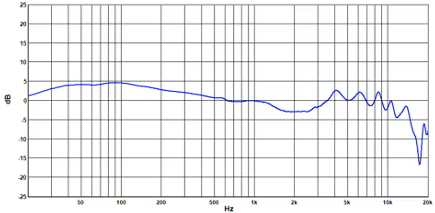
The curve above shows the transmission range with the velour ear pads, and the curve below shows the transmission range with the fabric ear pads.
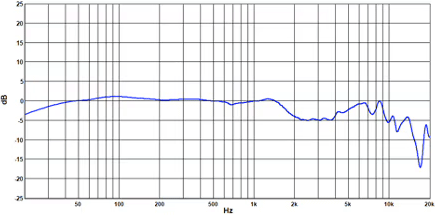
In comparison, it can be seen in the bass range that the response of the velour pads in the bass range at approx. 90 Hz is approx. 5 dB higher than the reference at 1 kHz. The transmission range with fabric is significantly more linear. There is also a slightly higher level in the range from approx. 3 kHz than with the fabric ear pads. Sennheiser therefore refers to the velour ear pads as being optimized for use in production and the fabric ear pads as being optimized for mixing. We will evaluate this in more detail in the practical section.
Symmetrical operation
Another pleasing feature is that the headphones have mini XLR sockets in both ear cups. This means that you can use the connection on the right or left and cover the connection that is not in use with a rubber plug.
The four-pin mini-XLR sockets are used to separate the ground of both converters, enabling a balanced connection. A cable on one side is also sufficient for balanced operation, which is a fundamental advantage in terms of wearing comfort.
In Sennheiser's consumer range, some headphones, such as the HD 660S or HD 800S, can be connected symmetrically. If you would like to find out more about the advantages of balanced operation, we recommend the headphone amplifier cookbook by Fried Reim, which you can download free of charge from our website.
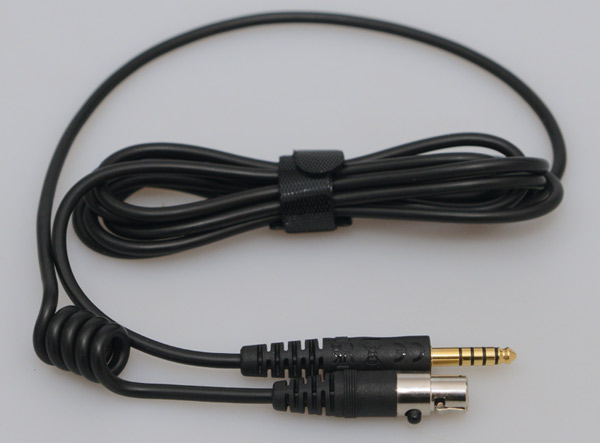
Incidentally, Sennheiser offers an optional cable with the so-called Pentaconn plug (a 4.4 mm TRRRS jack plug) for balanced operation (see illustration above). This socket can be found on many very high-quality, high-end headphone amplifiers, such as those from Violectric.
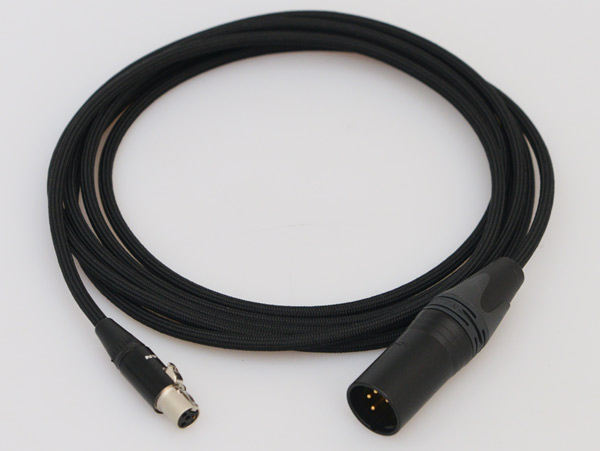
In the professional or music-producing segment, you are more likely to find an XLR-4 as a connection for balanced headphones, such as on the Lake People G108, which we also use as a reference headphone amplifier for balanced operation, or the SPL Phonitor XE. There are also adapters for XLR-4, but these are extremely expensive and are also somewhat unstable for the headphone amplifier. However, we came across the small manufacturer Audioverse in Bobingen (online shop in German language only) and once asked if they could make a specific cablefor the HD 490PRO in a professional environment, and they then included one in their range (order number 00225).
Practice
Letˊs start with the wearing comfort. Sennheiser has put a lot of effort into the design so that a very similar contact pressure is exerted on the head regardless of head size or shape and the type of padding used. This is achieved by the degree of curvature of the headphones. It is also helpful that the point at which the headband can be adjusted is relatively high. In addition, the axes of the headphone cups are positioned slightly inwards, meaning that the headphones rest on the head at a slight angle. The controlled contact pressure and offset axis also ensure that the headphone padding around the ear rests completely on the head and that there is no gap that would affect the pressure ratio and therefore the sound.
The whole thing works perfectly in practice. Personally, I have problems with some headphones with pressure points when they are worn for long periods. Thanks to the gap in the middle of the headband pads and the adaptive contact pressure, wearing them for long periods is not problematic. The comfort is exceptionally good. The gap in the head cushions also has the advantage of easier alignment when using head trackers and possibly better mounting options.

We are now coming to the headphone ear pads. The headphone pads have a small gap in the foam under the surface on both sides. This makes them even more comfortable for wearers with glasses, as the temples interfere less when the headphones are on.
There are two pad versions. However, this assumes that the headphone pads can also be replaced, and that this is can be achieved easily. Anyone who has ever tried changing the cushions on their headphones will probably have experienced that this can sometimes be a challenge. The HD 490 PRO is completely different. The pads also sit on a plastic carrier (see illustration above, seen from the back). You just have to have the courage to pull hard on the pad, and then itˊs all solved. Although there is a seam on the headphone pads that is aligned downwards at the factory, the pads are basically symmetrical. The two studs on each side allow the padding to be easily aligned for fastening, and by applying light pressure at the top and bottom, the strap snaps into place on the headphones. Once youˊve done this a few times, it only takes a few seconds to replace them.
However, this not only has the advantage that you can quickly change the acoustic conditions and therefore the sound (more on this in a moment), and that you can take care of it. If the upholstery material itself influences sound, then soiled or even defective upholstery will have the same effect. However, you can not only simply change and replace the pads but also wash them in the washing machine at 30 degrees and then leave them to air dry. In general, the upholstery with the plastic backing provides a very robust and durable impression.
The headphone impedance of the HD 490 PRO is designed to be in the middle of the impedances of standard studio headphones, some of which can have an impedance of up to 600 ohms. However, the 130 ohms also ensure that the HD 490 PRO could also be used with the headphone output of a synth or mobile interface, where the output impedance of the amplifier is not as low as that of a professional headphone amplifier.
Now to the sound of the HD 490 PRO. I would generally describe the sound as classic, very round, and not a harsh sound with an extreme emphasis on transients, but with a focus on a harmonious overall picture in combination with a high resolution and attention to detail. The transient reproduction is also excellent. The sound is likely to be perceived by many as warm because the bass reproduction is really very well-tuned.
This brings us to the differences in sound between the different pads. The difference in sound between the two types of pads is astonishing. The Veloure pads have significantly more bass and more pressure in the lower frequency range. Very pleasant for simply listening to and enjoying music. The sound is much more linear with the fabric cushion version, and this is particularly noticeable in the lower frequency range. The bass is positioned more precisely in terms of level and energy, which helps users to find the perfect tonal balance during mixing and mastering. There is no question that the fabric version will be preferred for mixing and mastering.
Conclusion
The price of the HD 490 PRO is around 400 euros, and that of the HD 490 PRO Plus with additional options is around 480 euros. The cable for connection to a balanced headphone amplifier costs 40 euros. For balanced operation on headphone amplifiers with an XLR-4 socket, the aforementioned cable is available from Audioverse for a price of approx. 60 euros.
The HD 490 PRO offers a very high level of comfort along with excellent craftsmanship. The many little details such as: Cut-outs for spectacle temples, tactile left/right or front/rear markings, the option of balanced operation, etc., all add up to a great deal of added value. Thanks to the easily replaceable and very sound-influencing headphone pads, users of the HD 490 PRO can virtually receive two headphones in one product. The sound is also impressive across the board, and with the HD 490 PRO, Sennheiser has succeeded in offering high-quality headphones for professional users. Up to now, many high-end headphones have been geared more towards customers in the high-end consumer market.
 How to resolve AdBlock issue?
How to resolve AdBlock issue? 